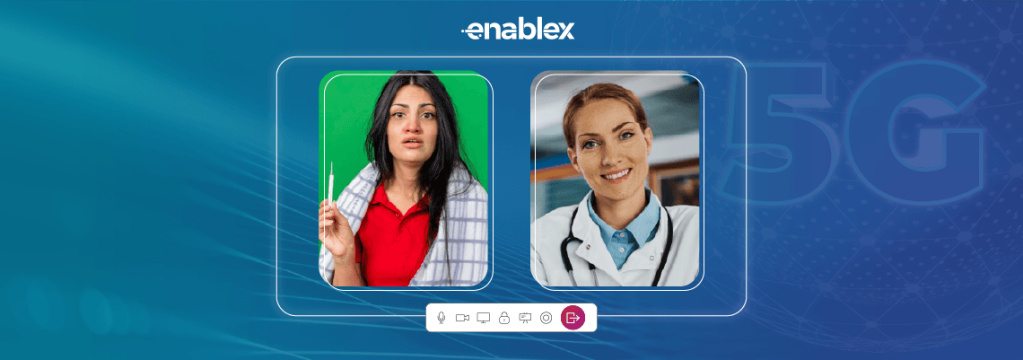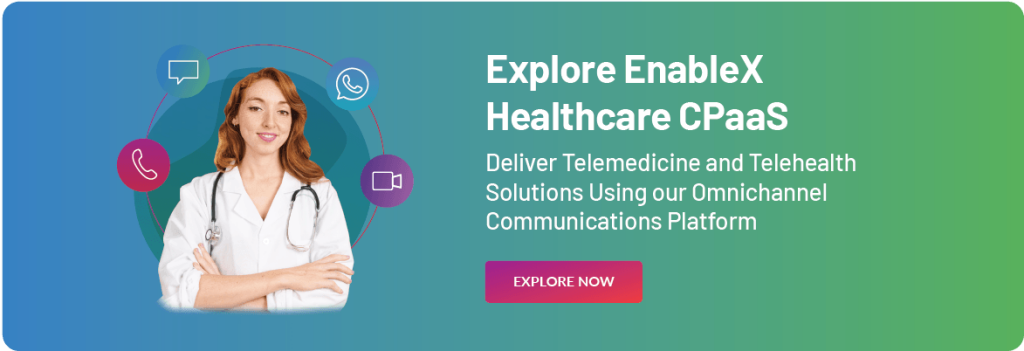Introduction to the 5G Healthcare Ecosystem
The world of healthcare is continually evolving, and technological advancements have played a pivotal role in shaping its landscape. One of the most promising developments is the integration of 5G technology into healthcare systems, particularly in the realm of video communication. In this blog, we’ll explore how 5G technologies are revolutionizing healthcare by enhancing video communication capabilities.
Per a report by Precedence Research, the global 5G in healthcare market is forecasted to reach approximately USD 459.71 billion by the year 2030, showing remarkable growth compared to its valuation of USD 48.25 billion in 2022. This growth is expected to occur at a compounded annual growth rate (CAGR) of 32.55% from 2022 to 2030. The 5G in healthcare market share from the virtual consultation applications was valued at over USD 1 billion in 2021. In addition, the healthcare provider segment is expected to surpass USD 60 billion by the year 2030. The healthcare industry is undergoing a major transformation and 5G is the center of it.
How 5G Will Benefit Healthcare:
- Ultra-Fast Speeds: One of the most significant advantages of 5G technology is its ultra-fast speeds. With speeds up to 100 times faster than 4G, 5G enables seamless, real-time video communication. In healthcare, this means that medical professionals can engage in high-definition video conferences with patients, colleagues, or specialists without lag or disruptions. This speed is essential for tasks such as remote consultations, telemedicine, and transmitting large medical files quickly. In countries with limited health infrastructure, areas with reasonably good 5G coverage can also potentially look at robotics assisted surgery in conjunction with live video streaming.
- Low Latency: Low latency is another critical feature of 5G technology. Latency refers to the delay between sending data and receiving a response. In healthcare, especially during surgical procedures conducted remotely or in complex diagnostic discussions, low latency is essential. 5G’s low latency ensures that communication between medical professionals is instantaneous, allowing for quick decision-making and precise actions. With 5G’s low latency, the surgeon can operate with precision, feeling as if they are right there in the operating room. This capability opens the door to critical surgeries that can be performed by experts across continents.
- 5G-Enabled High-Quality Video and Imaging: 5G technology enables high-quality video streaming and imaging. This is a game-changer in healthcare, where visual information is crucial. Medical professionals can now share and view medical images, such as X-rays, MRIs, and CT scans, in real-time with incredible detail and clarity. This level of detail can be the difference between an accurate diagnosis and a misdiagnosis. When a radiologist examines an MRI scan of a patient’s brain, the clarity and detail provided by 5G-enabled video conferencing allow them to identify even the tiniest abnormalities. This precision is vital for early detection of conditions like brain tumors, where timely intervention can be lifesaving.
- Remote Patient Monitoring and Telemedicine: Telemedicine has gained immense popularity, especially in remote areas where access to healthcare facilities is limited. 5G technology enhances telemedicine by allowing doctors to conduct virtual consultations with patients in real-time. Patients can share their vital signs, symptoms, or even perform simple tests under the guidance of medical professionals, all through high-quality video communication. For instance, a patient with a chronic condition like diabetes can wear a smart glucose monitor that continuously sends blood sugar readings to their healthcare team via 5G connectivity. The immediate transmission of this data allows healthcare providers to make timely adjustments to treatment plans, reducing the risk of complications. For example, if the glucose levels of a diabetic patient spike unexpectedly, their healthcare provider can receive an alert and intervene promptly.
- 5G-Enabled IoT Integration: The Internet of Things (IoT) is becoming increasingly prevalent in healthcare. With 5G, IoT devices can transmit data more efficiently and in real-time. This means wearable health devices, like smartwatches and monitors, can send vital data directly to healthcare providers through video communication. Doctors can monitor patients’ health remotely, making it easier to detect early warning signs and intervene when necessary.
- Collaborative Medicine: Collaborative medicine involves multiple specialists working together to provide comprehensive care to patients. 5G-powered video communication makes this collaboration seamless, even if the specialists are located in different parts of the world. Surgeons can consult with radiologists, oncologists, and other experts during complex procedures, improving patient outcomes. For instance, in a complex cancer case, a surgeon, oncologist, radiologist, and pathologist can collaborate in real-time using 5G technology. They can collectively analyze the patient’s data, discuss treatment options, and plan a coordinated approach, ultimately improving patient outcomes through their combined expertise.
- Reducing Healthcare Disparities: 5G technology has the potential to reduce healthcare disparities by bringing advanced medical care to underserved communities. With the improved connectivity and capabilities of 5G, patients in remote areas can access specialist consultations and medical expertise without the need for extensive travel, reducing both cost and time barriers. For instance, A remote village with limited access to healthcare facilities can set up a 5G-enabled telemedicine center. Residents can consult with specialists from distant urban centers, receiving expert guidance without the need for long journeys. This not only improves healthcare access but also reduces the financial burden on patients.
In conclusion, 5G technology is revolutionizing healthcare by enhancing video communication in numerous ways. Its ultra-fast speeds, low latency, high-quality video, and IoT integration are transforming the delivery of medical services, making healthcare more accessible and efficient. The 5G-enabled hardware devices segment is expected to surpass USD 47 billion by 2030. Some examples of 5G hardware include 5G small cells, Wi-Fi, and equipment for networking.
As 5G continues to expand its reach, we can expect even more innovative applications that will improve patient care and advance the field of medicine to new heights. The future of healthcare is undoubtedly intertwined with the power of 5G technology.
EnableX platform provides comprehensive documentation, tutorials, and developer resources to assist users in implementing and utilizing its video API effectively. We have a support team to help users with any questions or concerns. The team ensures that users have an easy and trouble-free experience.
EnableX provides a dependable and advanced solution for video, voice, SMS, and WhatsApp communication, benefiting various industries like business, telemedicine, and education. It helps organizations effectively utilize the power of video communication.
Sign up for EnableX’s free trial account to experience the best communication solutions available.



